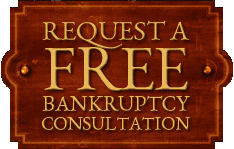If you are considering a debt consolidation program – stop right there! Make sure you know all of your debt solutions before entering into an agreement. Consider a chapter 13 bankruptcy (Minnesota filers click here for state specific regulations) as an alternative to a debt consolidation program.
A debt consolidation program will add to your debt, keep your stress level high and focus on full, timely monthly payments. Watch Wesley Scott, Minnesota bankruptcy attorney, discuss the benefits of a chapter 13 bankruptcy over a debt consolidation program. This video gives specific number examples that clearly depict the difference between the two debt consolidation solutions.
Put you and your family first by filing a chapter 13 bankruptcy instead of entering into a debt consolidation program.
No Added Costs
Adding costs to your already unmanageable debt isn’t a good idea. But that is exactly what will happen if you choose to use a debt consolidation program to get out of debt. The company you are working with will charge a fee, as Wesley Scott mentioned in the video. It may be a percent or a flat-rate, but the end result will add costs to your debt.
Also, you may be required to pay interest on your debts. This will depend on the company you are working with and the program you enter.
Don’t add stress to your life by adding costs to your debt. A chapter 13 bankruptcy attorney’s payment is wrapped up in your monthly payment made to the trustee assigned to your case. Read on to find out how this monthly payment differs from a debt consolidation program.
Monthly Payment Based on Your Ability to Pay
In a chapter 13 bankruptcy you will set a repayment plan with your attorney and propose it to the bankruptcy court. This repayment plan is based on your ability to pay. Generally speaking a repayment plan takes your actual monthly income and subtracts monthly expenses to determine what your monthly payments will be.
A debt consolidation program, on the other hand, will take into account all of your debt plus any interest and added fees and divide that by the number of months you are going to pay. These plans don’t take into consideration your ability to pay, you are merely expected to come up with the money you owe.
Debt-Elimination Solution
Both consolidation options will result in eliminating your debt. How and when you reach this point vary greatly under each debt consolidation option.
Chapter 13 bankruptcy repayment plans span three or five years, regardless of how much debt you will pay off. As Wesley Scott explained in the video above, any debt remaining after you make your affordable monthly payments for a set period of time is wiped away. You are no longer responsible for making payments toward this debt after your repayment period ends.
A debt consolidation program requires you to pay off all of your debt plus any added fees and interest. The time span will be discussed and agreed upon by you, your consolidation company and your creditors.
Additional Chapter 13 Benefits
If you file a chapter 13 bankruptcy you are required to go through a credit counseling course and you must make regular monthly payments on time. These requirements set you up for credit success in the future, teaching you how to manage your debt and responsibly handle payments.
Discuss your options with a bankruptcy attorney before making any decisions about your debt. Whether or not bankruptcy is right for you, an attorney will be able to share expertise and knowledge that can prepare you for dealing with your debt.



